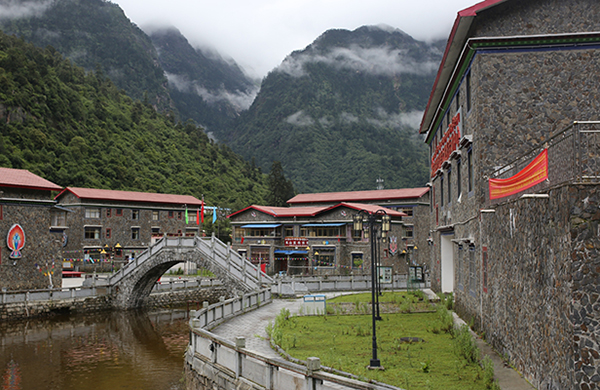
The Chinese government has announced plans to relocate over 100,000 Tibetans from their homes by 2030, aiming to end their traditional way of life and bolster its control over border areas including India.
This is part of China’s strategy of aggressively constructing new villages in disputed border areas to extend or consolidate its control over these areas that India, Bhutan and Nepal maintain to be within their national territories, Tibet media reported.
As per a recent report in Hong Kong-based publication quoting a Chinese government document, China intends to build 624 border villages in disputed Himalayan areas.
This new measure is part of China’s larger strategy, launched in 2018 by the Tibet Autonomous Region (TAR) Communist Party Committee, designed to relocate the Tibetans living in very high altitude regions throughout Tibet, defined as 4,800 meters high or above under its so-called ‘very high-altitude ecological relocation plan.
Although China claimed that its move was to conserve the environment but there is no scientific evidence as to how relocation would have a positive impact on the environment.
According to the publication, the actual reason was to end the Tibetan traditional way of life. Notably, Tibetans in these regions have been nomads for generations who have been living ‘cordially with nature’ high on the Tibetan Plateau for centuries.
It is estimated that the forced relocation and settlement would lead to the displacement of about 2 million Tibetan nomads, who would lose their livelihood and be pushed into, poverty and get marginalized.
And therefore, under China’s so-called ‘Poverty Alleviation’, ‘Ecological Migration’ and now the ‘Very High Altitude Ecological Migration’ plans, the Tibetans were uprooted and instantly altered to achieve Beijing’s plan to dilute Tibet’s identity, control and enforce their assimilation into the Chinese cultural and economic world.
The relocation plan imagined that as many as 130,000 people would be displaced from the Autonomous Prefectures of Shigatse (Rikaze), Nagchu and Ngari (Ali) in the TAR, to be carried out between 2018 and 2025.
According to the publication, over 100,000 of the 130,000 Tibetans will be re-settled along the Yarlung Tsangpo River with plans to develop a core economic zone with industrial corridors along the river.
Under the 2018 plan, the first relocation site was established in Gachong village, Gurum (Gurong) township, Toelung Dechen (Duilong Deqing) District, Lhasa prefectural city. According to a Xinhua report, published on October 21, 2020, 1102 residents were relocated from Gurum Township Jialing Jiadong Village, Rungma (Rongma Township), Nima County in Nagchu prefecture in the Jangthang (Qiangtang) Nature Reserve area.
Recently, the Chinese government has been implementing relocating 26,304 people mostly from Tsonyi County, Amod County and Nyima County to Lhoka prefecture within the TAR.
According to the Tibet Press citing Xinhua’s August 2022 report, about 17,555 Tibetans from Nagqu city (North East of Tibet) – which has more than 1000 towns and villages are relocating to Sinburi (Senburi) village, Gongkar (Gongga) County, Lhoka in southern Tibet. Lhoka (Shannan), with the relocation destination of the population about 400 km away from their home.
Behind the relocation plan, China also planned to spur innovation in key sectors and leverage dual-use technologies for military end-uses. China sees Military-Civil Fusion as a strategy to use civilians and dual-use technologies and facilitates its national defence, reported Tibet Press.
Under this strategy, the Chinese government has been giving training to civilian and military personnel to achieve an organic, powerful, and comprehensive national system of strategies.
It is therefore important to understand the Chinese hidden objective of these policies due to its strategic importance for Tibet and in the context of the Chinese strategy of forced mass relocation of Tibetans, from different parts of Tibet to Lhoka, which aimed at strengthening the ‘Border Defense Villages’ or ‘Xiokang Villages’ which is Beijing’s way of ‘Military-Civil Fusion (MCF)’.

















